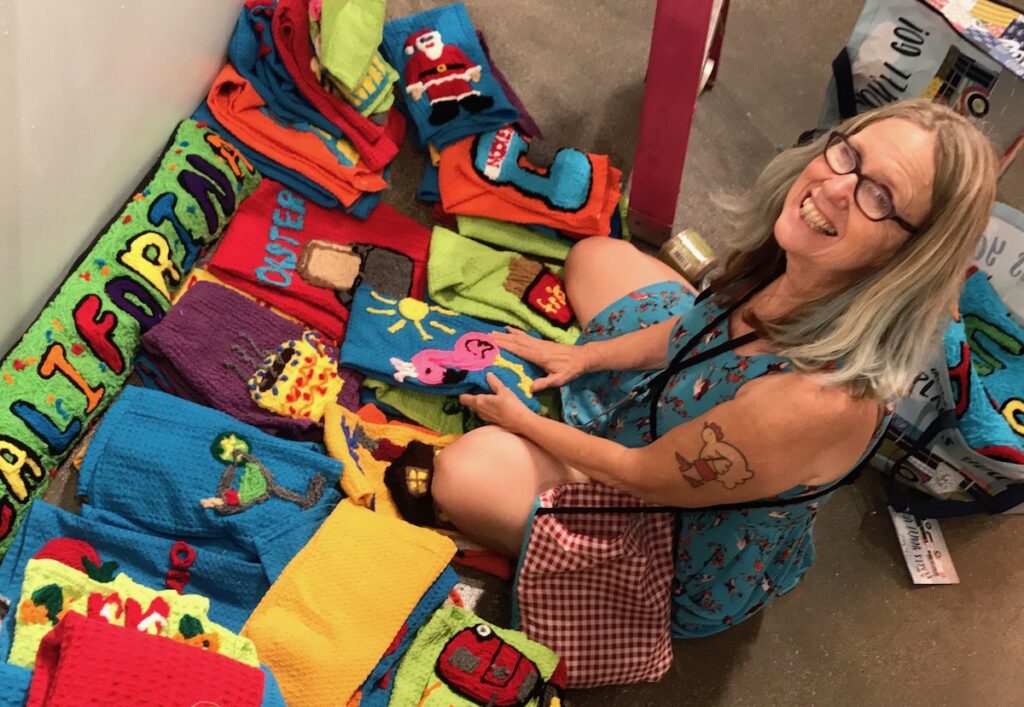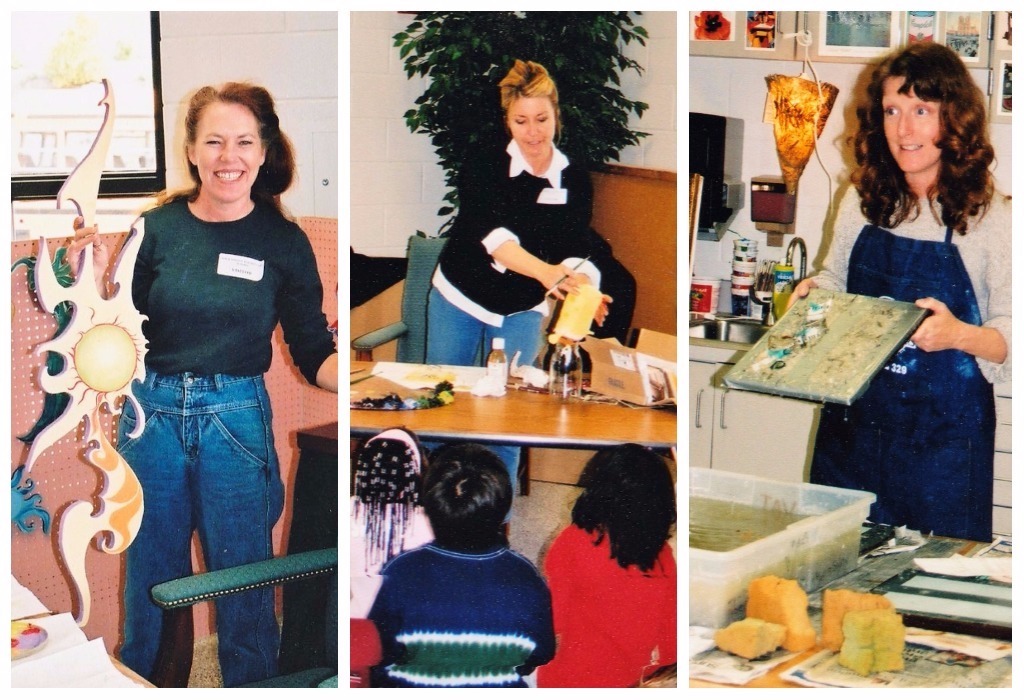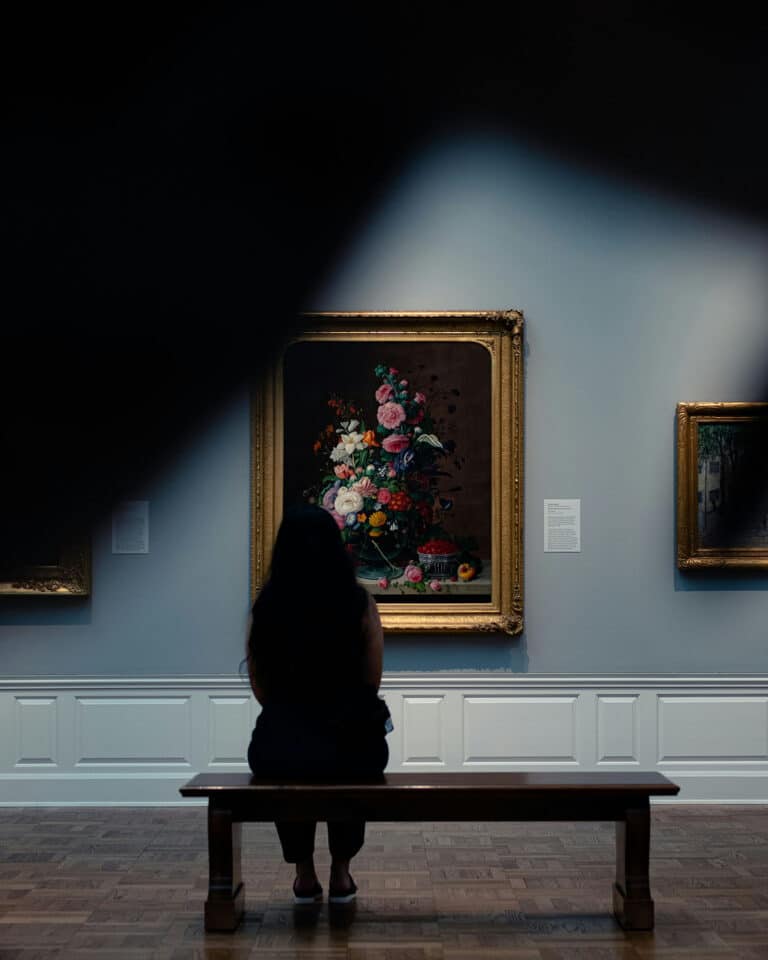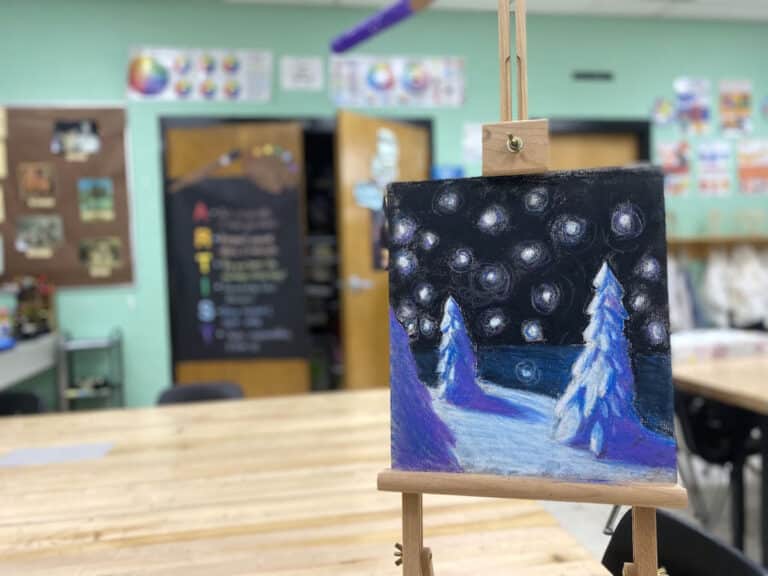As art educators, our job is to teach children about the world of art. What can be better than introducing students to local community artists? It’s an absolute win-win!
And the best part is, it’s not nearly as complicated as you would think.
Here are 7 steps to partnering with community artists.

1. Network
The first step to partnering with community artists is to find some! Start by reaching out to community members and partners like parents, colleagues, administrators, and businesses. Networking is the best way to research and ensure you’re finding the best of the best. Once you have a list of community artists, the real fun begins.
2. Introduce Yourself
After you have a running list, it’s time to reach out personally. I love meeting artists and telling them about what I do as a visual art educator. Many artists are excited about the possibilities of working together once they understand what a powerful experience it can be for students.
3. Invite them to School!
I always say if you don’t ask, you don’t get! So, ask a community artist if they would be willing to visit your classes or school. Don’t forget to ask if they have a fee. I have found over the years most artists are more than happy to visit my students and most don’t want to charge. But the artist in me always tries to get them at least a little something for their time. Ask your PTA if there are funds available for such visits. And, don’t forget there are a lot of wonderful grants out there if you do your research!

4. Create a Plan
It’s important to plan how you want to introduce the artist to your students. Do you want to do something casual or make it a more celebratory event? I used to invite local artists to come in during March to celebrate National Youth Art Month. I had different events each week, and one of these was “Celebrating Our Local Community Artists.” Each day, a different artist would set up a workstation and art display in the main atrium of our school. Classes were encouraged to sign up for a time to go and visit throughout the day. Check out a few “blast from the past” images from visiting artists at my school below!

If at all possible, have the artists demonstrate their techniques for students. Students love to see the creation process. Obviously, artists who work in more complicated media (such as a glass blowing) won’t be able to do live demonstrations, but they might be able to think of a way to make their process visible. Bringing in-process work, photos, or even a short video can help.
In addition, if you’ll be bringing in multiple artists, it’s nice to have a range of media represented. For example, one year I had a fiber artist on Monday, a painter on Tuesday, a glass blower on Wednesday, a collage artist on Thursday, and an illustrator on Friday. I found once I met a few artists, they were always open and willing to introduce me to more artists. Over time, I had access to a large network of over 40 local artists!
5. Advertise and Get Your Students and School Excited
Once your event is planned, make sure you advertise! You’ll want to remind staff and parents when and how artists will visit the school.
You’ll also want to work with your students ahead of time, so they can have a bit of background information and some time to think of questions to ask. Make sure you tell them what type of art they’ll be seeing and introduce them to any concepts or vocabulary words that will make the artist’s work more accessible.
6. Share the Wealth
After artists started coming to my school, I realized how important it was to share the experiences with other art teachers in my county and state. As a result, many of the artists I worked with began visiting several schools a year. A few even realized they could be “teaching artists” and joined our state’s teaching artist registry!
7. Create!
Finally, before, during, or after your artist visits, it’s always nice to make a classroom connection and design a lesson based on the artists’ work. For example, Mavis Stevens, the artist featured in the first photo in this article, is a fiber artist who literally paints with her special sewing machine and yarn. My students LOVE her and her work, so I designed a yarn painting lesson to go with her visits. We also held a community student art show in the local folk art museum where several of these artists work. Talk about a great conclusion to a truly successful collaboration.
I can’t say enough about how important it is to collaborate with your local community artists!
Do you collaborate with community artists?
How do you teach contemporary art to your students?
Magazine articles and podcasts are opinions of professional education contributors and do not necessarily represent the position of the Art of Education University (AOEU) or its academic offerings. Contributors use terms in the way they are most often talked about in the scope of their educational experiences.






